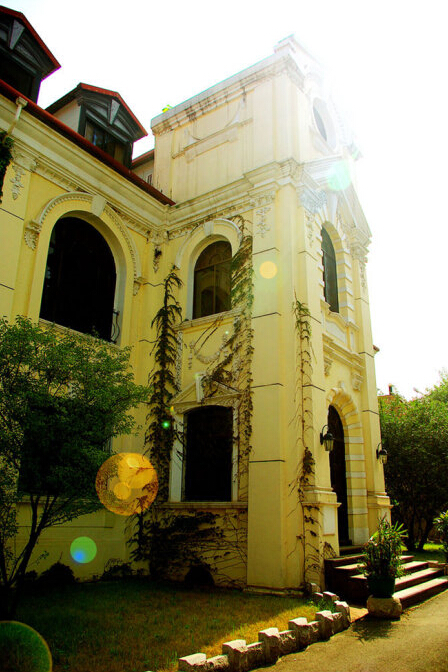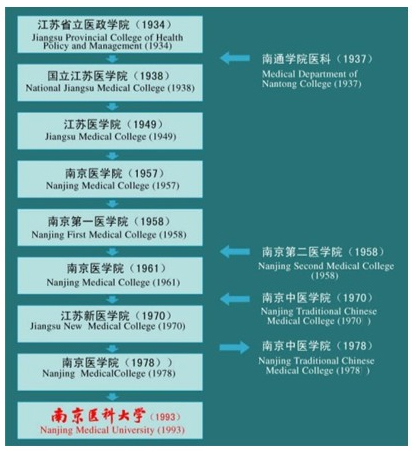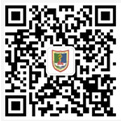
The history of NMU can be dated back to September of 1934, when Jiangsu Provincial Medical College, the first medical college in China, was established in Zhenjiang, a small city near Nanjing. Its founder, Mr. Chen Guofu, was the first person who advocated health care, health education and health administration in China.
The newly established college attracted a lot of scholars and experts to work there. Quite a number of them had the experience of studying abroad, and some of them were PhD holders.
At that time, although the feudal culture was still remaining and the general public knew little about medical science, our college made bold attempts in both practice and research.
The college also did a lot in promoting the early development of public health in China. For example, it started a weekly magazine at that time, which was one of the earliest publications of health education in China. Besides, it set up two national health education organizations to help raise the public awareness of health and medicine. The Zhenjiang branch of Chinese Medical Association was also founded in the college.
The second period: Jiangsu National Medical College (1938-1949)
In November, 1937, due to the Japanese aggression against China, Jiangsu Provincial Medical College was forced to move westward to Hunan Province. Then in September of 1938, 4 years after its founding, the college was renamed Jiangsu National Medical College after it was merged with Nantong Medical School.
The third period: Jiangsu Medical College (1949-1957)
After the founding of new China, our college was given the third name: Jiangsu Medical College.
Professor Shao Xiangyi is the first president of the college after liberation. A renowned expert on hygienics, Professor Shao was the chief editor of the first textbook and first dictionary of hygienics in China. He also set up several research institutes, which contributed vastly to the early development of health education in our country.
The fourth period: Nanjing Medical College (1957-1970)
Now, we are entering the 4th period in the history of our college since its name was officially changed to Nanjing Medical College . The main teaching building was the best and biggest one in Jiangsu Province at that time.
Yan Shoumin was a master in the field of pediatric medicine in China as well as the most prestigious first grade professor in Nanjing Medical College. During his tenure from 1947 to 1991, pediatrics in Nanjing Medical College became a key discipline of Jiangsu Province and one of the first state-level PhD programs. Mr. Yan lived a long life, because he had a simple but effective way to keep fit: walking. Every day he walked between home and office, even if it was blowing and raining. This is the table he used.
During this period, our faculty members and medical staffs also made a lot of achievements, part of which are displayed here. For example, Professor Hou Xide created a nerve conduction model and established the first CSF cytology laboratory in our country. Professor Zhu Siming and his team developed three generations of cardiac pacemaker. Yu Ziping, an ophthalmology physician from the affiliated hospital, drew the fifth edition of color blindness chart.
The fifth period: Jiangsu New Medical College (1970-1978)
In 1970, Nanjing Medical College merged with Nanjing Chinese Medicine College. The newly merged college was named Jiangsu New Medical College. The new college still emphasized the principle of serving the people and society. On July 28, 1976, a 7.8-magnitude quake struck Tangshan City, Hebei Province, causing great casualties. The college and its affiliated hospitals immediately sent a professional medical team to the disaster area.
The sixth period: Nanjing Medical College (1978-1993)
In 1978, Jiangsu New Medical College was withdrawn and Nanjing Medical College continued to be operated as an independent college.
In order to make the college get better development, the then leaders attached great importance to scientific research. With the support of relevant departments in Jiangsu Province, our college purchased its first electronic microscope in 1978.
The seventh period: Nanjing Medical University (1993-)
In 1993, the name of the college was officially changed to Nanjing Medical University. In 2002, a new campus was constructed in Jiangning District of Nanjing.
Currently the total number of studenrs in our university is more than 17,000.
Our students are excellent. For example, they have joined many times in the National Competition of Clinical Skills of Medical Students and every time they did very well.
Academic and Scientific Research
Building science and technology innovation platform is always the focus in our university. We have different levels of key labs to meet the various needs of teaching and research.
Cutting-edge facilities help to produce significant results. There have been 3 high-ranking first prize winning projects carried out in our university.
Internationalization is always a big aim of NMU, and lots of effort has been put into the pursuit. So far out university has established cooperation and exchange programs with more than 40 colleges and universities in over 20 countries and regions. Large international academic forums are held here every year. With all of these activities, NMU’s academic reputation is rising rapidly.
Social Services
NMU has always emphasized the education of teaching and medical ethics, and has never forgotten our duty to serve the community.
Whenever and wherever we are needed, we will be there in time with our love and expertise. Here is a piece of news about Professor Yao Kun who invented anti-IFN alpha to help overcome the terrible SARS break in 2003.
University-enterprise cooperation is actively promoted. In 2011 NMU signed a strategic cooperation agreement with Simcere Pharmaceutical Group to conduct cooperation on Professor Zhu Dongya’s scientific research achievements.
In1998, the Clinical Department of the National Key Laboratory of Reproductive Medicine in NMU, successfully gave birth to the first test tube baby. Located in the north of Wutai Campus, the Clinical Department is devoted to the benefit of infertility patients.
Talents
Talents are core of development. Here is a list of part of the high-level talents in our university. This is Professor Wang Xuehao, our first academician of Chinese Academy of Engineering. Then, Professor Li Jianan, a famous foreign academician. Professor Shen Hongbing, our current president, is also a distinguished scholar.
Alumni
For a university, its alumni are valuable wealth as well as important indicator to measure the level of its development. Those presented here are some of the outstanding representatives of them.
Ge Kequan, one of the second batch graduates, has donated more than 200,000 dollars to build Ge Kequan Building.
Li Lanqing, former Vice Premier, is an outstanding alumnus of our university. Mr. Li was admitted to Jiangsu Medical College when he was only 15, and then experienced the most intense and difficult study life there. He and his classmates had to finish all high school curriculums within 1.5 years and started medical courses in the meanwhile. Most of the textbooks were written in English, and German was also a required course. However, Mr. Li benefitted a lot in this period, and had deep feelings toward his alma mater. His inscription for NMU’s 80th anniversary is displayed in the exhibition area of celebrity inscriptions, and the lyric of the latest version of our school song is written by him too.
Yuan Huiying, known as “the people’s good doctor”, lost her life on the way to a patient's home due to a car accident
Wang Yue, faculty member of Chinese Astronaut Center, participated in Mars - 500 Project as the only Chinese volunteer.




